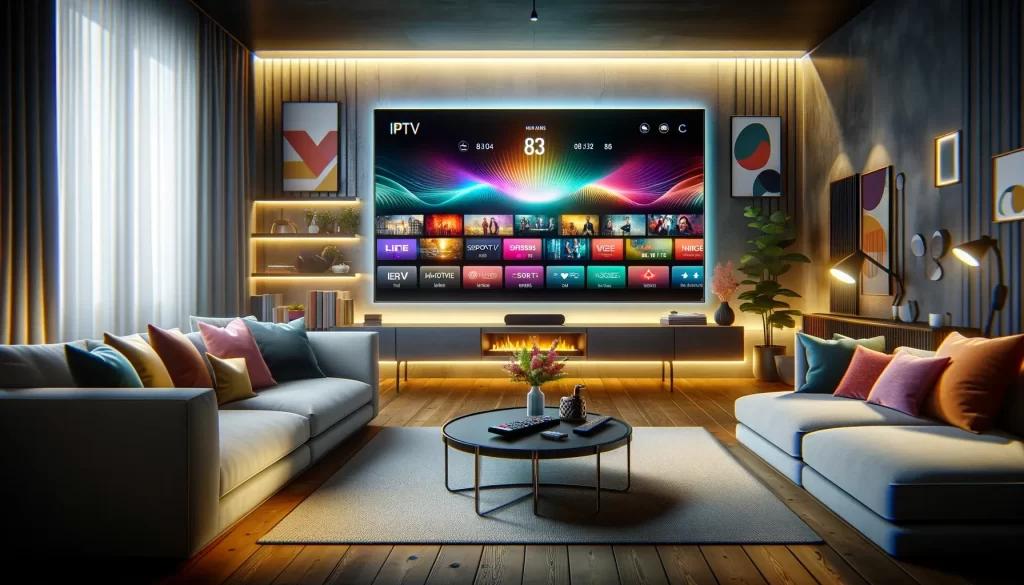In the rapidly evolving world of digital entertainment, Internet Protocol Television (IPTV) stands out as a revolutionary technology that is reshaping the way we consume television content. IPTV, unlike traditional broadcast methods, delivers television services over the Internet. This innovative approach allows for a more personalized and interactive user experience, offering a wealth of content at the fingertips of viewers.
How IPTV Works
At its core, IPTV operates by transmitting TV programs and videos through the Internet using Internet Protocol (IP). This method significantly differs from traditional terrestrial, satellite, and cable TV formats. With Internet Protocol Television, digital television service is provided by utilizing a complex network architecture that includes a wide range of technologies and equipment.
NordicIPTV.com is a platform that offers Swedish IPTV services, providing a wide range of channels, movies, and series. With subscriptions starting from 99 SEK, they support various devices such as SMART TVs, Apple TV, iPhone, and Android. They also offer a Nordic IPTV Box for testing IPTV in Sweden. The website highlights the stability and quality of their service, with servers based in China, and Azerbaijan, and reflected in the Netherlands. However, it’s important to note that the legality of IPTV services can vary, so it’s advisable to research the legality in your region before subscribing.
The Technology Behind IPTV
Internet Protocol Television involves a series of processes to deliver content to the end-user:
- Content Preparation: Initially, TV shows and videos are converted into a digital format that can be distributed over the Internet.
- Content Storage: The digital content is then stored on servers for easy access and management.
- Content Delivery: When a user selects a program, the content is delivered via the internet through a broadband connection.
- Playback: Finally, the content is displayed on the user’s device, be it a TV, computer, or mobile device, through an IPTV application or software.

Types of Internet Protocol Television Services
Internet Protocol Television offers various service types, each catering to different user needs:
- Live Television: This includes live broadcasts over the internet, similar to traditional TV.
- Time-Shifted Media: Also known as catch-up TV, this allows users to watch broadcast TV shows later.
- Video on Demand (VOD): Users can select and watch video content whenever they choose, rather than at a scheduled broadcast time.
Advantages of IPTV
Customization and Interactivity: IPTV provides an interactive user experience, offering features like personalization of content, on-screen menus, and search functions.
Convenience and Accessibility: With IPTV, viewers can access a wide range of content from anywhere, at any time, as long as they have an internet connection.
High-Quality Content: IPTV supports high-definition content and provides superior audio and video quality compared to traditional broadcasting methods.
Additionally, IPTV platforms open up opportunities for Monetization for Online Content Creators by offering various revenue-generating features like subscription services, pay-per-view, and ad-supported content.
The Future of IPTV
The future of IPTV is promising, with ongoing advancements in internet technologies and increased broadband speeds. Internet Protocol Television is set to offer even more innovative features, such as enhanced interactivity, personalized advertising, and integration with other digital services.
Choosing the Right Internet Protocol Television Service
Selecting an Internet Protocol Television service requires consideration of several factors:
- Content Availability: Ensure the service offers the type of content you are interested in.
- Quality of Service: Look for services that offer reliable, high-quality streaming.
- User Interface: A user-friendly interface enhances the overall experience.
- Price: Compare different service providers to find the best value for your needs.
Setting Up IPTV at Home
Setting up at home involves a few simple steps:
- Choosing a Service Provider: Select a provider that offers the type of content and quality you desire.
- Equipment: Depending on the service, you may need a set-top box, a compatible smart TV, or a streaming device.
- Installation: Follow the provider’s instructions to set up the equipment and connect to the internet.
- Subscription: Choose a subscription plan that suits your viewing preferences and budget.
Final Thought
Internet Protocol Television represents a significant shift in the way we access and enjoy television content. With its advanced features, convenience, and personalized viewing options, IPTV is not just a new technology but a new era in television history. As internet speeds continue to increase and more content becomes available, IPTV is set to transform the television landscape permanently.
For those looking to embrace the future of television, Internet Protocol Television offers an unparalleled viewing experience, combining the best of traditional TV with the advanced capabilities of modern technology.

